Asteraceae: Bidens frondosa L.
(common beggartick, devil's beggartick )
There are 7 species of the genus Bidens, the beggarticks, in Nova Scotia. All (in N.S.) are annual herbs growing in wet places. Two- or 4-awned fruits stick to animals or clothing, hence the inclusion of "bur" or "tick" in common names.
 "Bidens" comes from the Latin for two teeth, referring to the awns. The flowers of Bidens spp. may be discoid or radiate, with yellow rays in the radiate types. Leaves are always opposite.
B. frondosa has petiolate, pinnately compound toothed leaves with 3-5 leaflets, 5-8 floral bracts, usually lacks floral rays and has 2-awned fruit. Plants vary in height between 20 cm and 1.5 meters accordig to site conditions.
"Bidens" comes from the Latin for two teeth, referring to the awns. The flowers of Bidens spp. may be discoid or radiate, with yellow rays in the radiate types. Leaves are always opposite.
B. frondosa has petiolate, pinnately compound toothed leaves with 3-5 leaflets, 5-8 floral bracts, usually lacks floral rays and has 2-awned fruit. Plants vary in height between 20 cm and 1.5 meters accordig to site conditions.
B. frondosa occurs at edges of ponds and streams and in moist, disturbed soils around human habitations, e.g., in ditches. The species is broadly distributed in North America, absent only from Yukon, NWT, Nunavut and Labrador. 1 It is a weedy species which is native to North America and introduced and expanding in Europe.2 (This is a notable exception to the more usual pattern in which weedy European species have followed colonists to North America.)
Sources | Notes & Refs | Selected Web Resources | Line Drawing
Click on images for larger versions.
| Sep. 6, 2008. Haliax County: Point Pleasant Park (Halifax). Photographer: JackPine. | |

|
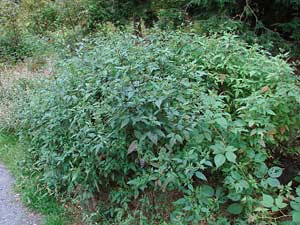
|
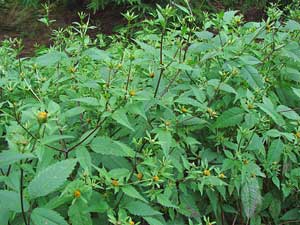 |
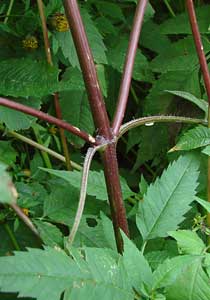 |
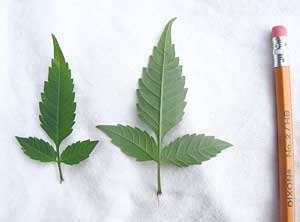
Leaves have sparse, soft hairs, more so on the underside. |

|
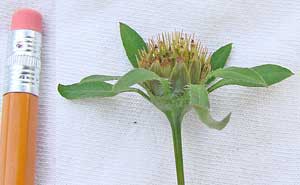 Older flower with developing fruit. |
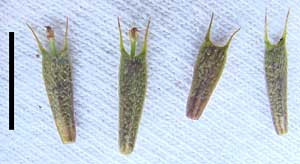 Bar is 1 cm. |
| Oct. 22, 2008. Haliax County: Frog Pond (Halifax). Photographer: JackPine. | |
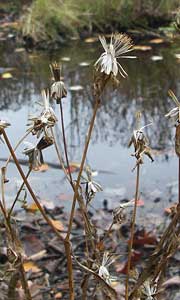
|
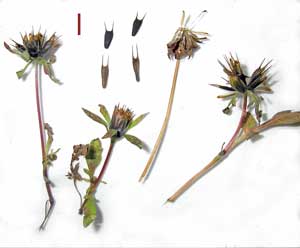
Bar is 1 cm. |
Selected Web Resources
- Taxonomic Status (ITIS) Copy the species name above and paste it into a form on this ITIS Canada page to confirm the nomenclature and list synonyms.
- NatureServe Explorer Copy the species name above and paste it into a form on this page to view a map of its distribution within North America and its conservation status by province and state.
- Flora of North America: Bidens
Notes & References
- NatureServe Explorer [Accessed 7 Sep. 2008]
- Cofikunceleb, K., Terzioglu, S. & Vladimirov, V. (2007). A new alien species for the flora of Turkey: Bidens frondosa L. (Asteraceae). Turkish Journal of Botany, 31: 477-479. PDF at http://journals.tubitak.gov.tr/botany/issues/bot-07-31-5/bot-31-5-9-0611-6.pdf. [Accessed 7 Sep. 2008]